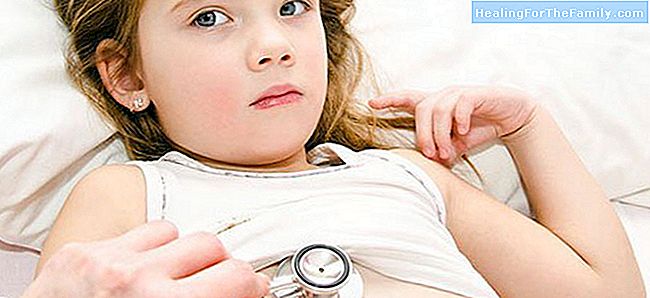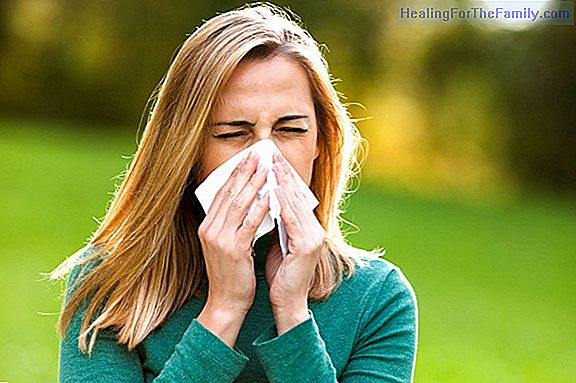Rare Diseases in children. Characteristics and symptoms
Rare Diseases are a group of pathologies that affect few people, most of them from birth due to their genetic nature, and are responsible for 35 percent of the deaths that occurred during the first year of life. The professor María Teresa García Silva , Coordinator of the Unit of Mitochondrial Disea
Rare Diseases are a group of pathologies that affect few people, most of them from birth due to their genetic nature, and are responsible for 35 percent of the deaths that occurred during the first year of life.
The professor María Teresa García Silva, Coordinator of the Unit of Mitochondrial Diseases and Hereditary Metabolic Diseases, of the Pediatric Unit of Rare Diseases of the University Hospital 12 de Octubre, of Madrid, clarifies in this interview granted to GuaInfantil.com which they are the characteristics of rare diseases in children, their symptoms and what parents can do.
Characteristics and symptoms of Rare Diseases in Children

What are the most relevant characteristics of Rare Diseases in children?The common characteristic of Rare Diseases is that they are infrequent in the population, that is, the prevalence of each of these diseases in the population is less than 5 per 100,000 inhabitants. These pathologies are very heterogeneous and diverse. They have some characteristics that differentiate them from the rest:
- Their diagnosis is usually complexand requires knowledge and highly specialized techniques or have special complexity (sometimes, the necessary tests are only carried out in very few centers). Pre - They require a very specialized medical management
and require the participation of several specialties and different disciplines- They are generally serious
, chronic and in many cases invalidating diseases, they usually require special, complex and prolonged care.Is it true that there is a delay in the diagnosis of
between 5 and 10 years?Only about 250 diseases are assigned a code in the International Classification of Diseases (ICD) of the World Health Organization, which makes it even more difficult to address. Sometimes, they are little known diseases, but other times they are known, but because of their infrequency, in clinical practice they are not taken into account as a first diagnosis. As a consequence, if the disease is severe and rapidly evolving without treatment it can cause the death of a newborn, or sequelae. This occurs with classical galactosemia, which is not included in the neonatal screening of some autonomous communities, its incidence is: 1: 50,000. The treatment consists of making a special diet, suppressing immediately, and for a lifetime, galactose, component of milk, and food sources of galactose derivatives. With this simple treatment, the disease progresses favorably.What symptoms can make parents suspect that their child has a Rare Disease?
In general, you have to think about them when the symptoms or 'association of symptoms' are not typical of any other disease or there is an unexplained association of symptoms. In childhood, it should be noted that many congenital errors of metabolism are presented with digestive and neurological symptoms, either chronically or with acute phases, for which the doctor goes.From what age can a Rare Disease be detected?
Symptoms may be present from birth, even in fetal life. But they can appear at any age, especially in the first two years of life. When you think about these diseases and look for them, they can be diagnosed, even in fetal life, although it is more difficult because the studies to perform in these periods are much more complex. On the other hand, it is true that sometimes the doctor knows that he is seeing a patient with RE (because there are similar family cases without diagnosis, or because there is an examination that suggests this). Generally, researchers and referral centers are used with ER experts, but even so, an etiological diagnosis may not be reached.What are the main problems faced by families of children with a rare disease?
Frustration, anguish, loneliness and a feeling of isolation are very frequent. But in addition, socio-economic problems are added, and given the chronicity of the disease and unmet needs: rehabilitation, physiotherapy, special orthopedic measures, special education, speech therapy and many more. If medical procedures are diversified and a large number of consultations are needed, the repercussions on work are very serious. They require not only medical care, but also psychological and social support, and often nutritional measures. The latter are absolutely essential in many congenital errors of metabolism.Who should parents of children with rare diseases go to?
They should consult with their pediatricians and they will refer the suspected children to specialized centers, depending on the symptoms they have.What are the main novelties in the investigation of Rare Diseases?
In recent years, many advances are being made, emphasis is being placed on these diseases, and efforts are being made to address them. It is working in many fields simultaneously: medical, social, research and new treatments. Thanks to the improvement in laboratory techniques and the better knowledge of each disease, the number of diagnoses has increased. The development of new technologies, particularly tandem mass spectrometry and 'high performance' platforms for the analysis of mutations, has made it possible to detect more than 50 different genetic diseases in a single sample of blood on paper from the newborn born.It is true that there are two categories of detectable genetic diseases; a relatively small group of them well known and treatable, and another potentially larger group, consisting of little known diseases and some without treatment. But once they are diagnosed, you can perform genetic counseling, prenatal diagnosis, and proceed to the best possible therapeutic options. With all this and scientific advances is progressed in the knowledge of diseases, with the aim of finding more effective treatments, which although they are not curative for certain diseases, they do improve the quality of life of those affected.
Marisol New
. Guiainfantil.com












